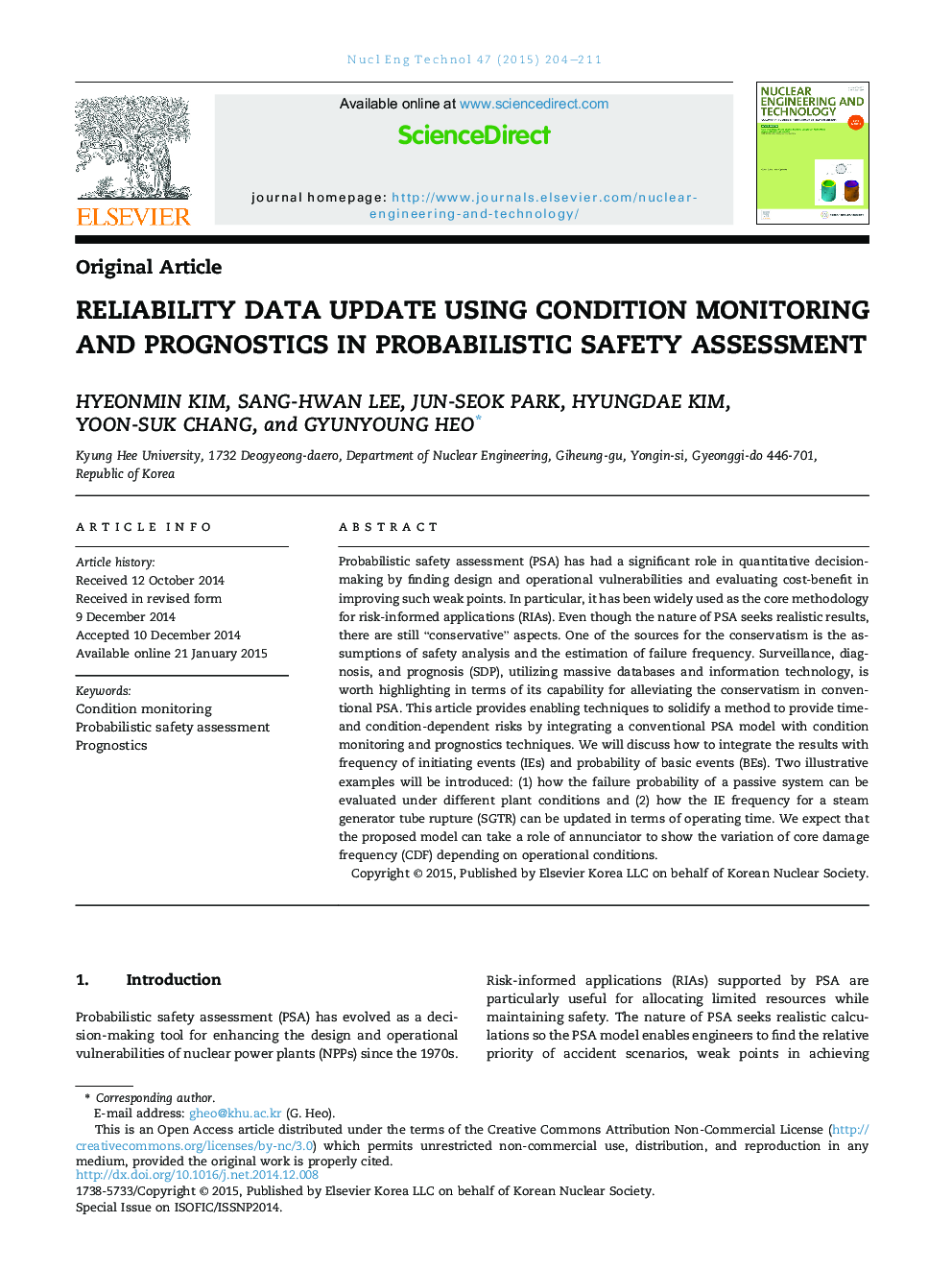| Article ID | Journal | Published Year | Pages | File Type |
|---|---|---|---|---|
| 1740180 | Nuclear Engineering and Technology | 2015 | 8 Pages |
Probabilistic safety assessment (PSA) has had a significant role in quantitative decision-making by finding design and operational vulnerabilities and evaluating cost-benefit in improving such weak points. In particular, it has been widely used as the core methodology for risk-informed applications (RIAs). Even though the nature of PSA seeks realistic results, there are still “conservative” aspects. One of the sources for the conservatism is the assumptions of safety analysis and the estimation of failure frequency. Surveillance, diagnosis, and prognosis (SDP), utilizing massive databases and information technology, is worth highlighting in terms of its capability for alleviating the conservatism in conventional PSA. This article provides enabling techniques to solidify a method to provide time- and condition-dependent risks by integrating a conventional PSA model with condition monitoring and prognostics techniques. We will discuss how to integrate the results with frequency of initiating events (IEs) and probability of basic events (BEs). Two illustrative examples will be introduced: (1) how the failure probability of a passive system can be evaluated under different plant conditions and (2) how the IE frequency for a steam generator tube rupture (SGTR) can be updated in terms of operating time. We expect that the proposed model can take a role of annunciator to show the variation of core damage frequency (CDF) depending on operational conditions.
